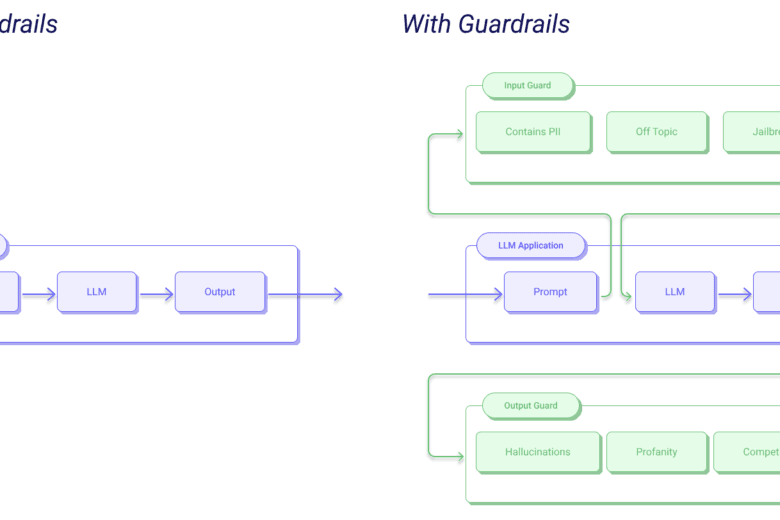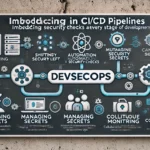TL;DR: DevSecOps is important for secure software development, and using AI guardrails makes security easier. AI platforms like Prime Security help developers find problems early, follow security best practices, and reduce their workload. This blog talks about how AI guardrails are changing DevSecOps, why they are important, and how they help build responsible AI.
The Rise of AI in DevSecOps
Modern app development is getting more complex, which makes it even more important to think about security from the start. DevSecOps was created to bring together development, security, and operations, making sure security is part of the entire development process.
One big challenge is that many development teams don’t have enough security experts. Even with some tools to find security issues, developers still have to worry about both the app’s functionality and its security.
This is where AI guardrails come in, helping to automate security checks and make it easier for developers to follow security best practices.
What Are AI Guardrails?
AI guardrails are safety measures added to the development process to stop harmful outcomes, similar to how highway guardrails keep cars safe. These AI guardrails check code, settings, and workflows in real-time to catch problems before the app goes live.
AI guardrails are key to responsible AI, using both technical and policy-based controls to make sure AI is used safely and ethically. They work across different types of AI systems, from simple models to more advanced ones that can impact many people.
Instead of waiting for security reviews at the end, AI guardrails are there throughout the process, guiding developers to write secure code and making sure security best practices are followed.
One example of an AI-powered guardrail solution is Prime Security, which helps development teams follow secure design principles by finding risks early and enforcing best practices in DevSecOps.
If you want to try AI guardrails, check out Guardrails. It is a Python framework that helps build reliable AI apps by running input/output checks to find and reduce risks, and also helps generate structured data from large language models (LLMs).
How AI Guardrails Work in DevSecOps Workflows
AI in DevSecOps isn’t just about scanning for problems—it’s about helping with the entire process of finding, understanding, and fixing security risks. Here’s how AI guardrails help:
- Early Detection of Security Issues: AI models are trained to find common security problems like unprotected sensitive data, improper access controls, and missing audit trails. By catching these issues early, AI guardrails help make sure security is taken care of before the app is released.
- Context-Risk Engine: Tools like Prime Security use a context-risk engine to assess the security of an application in real-time. They use security best practices to highlight potential risks in the app’s environment.
- Integration with DevOps Tools: AI-powered security tools work with tools like Jira and Confluence, making it easier for developers to track and fix security issues without leaving their normal workflows.
- Automation and Remediation: AI guardrails provide automated suggestions and fixes for security problems. For example, if an insecure setting is found, it can be flagged for review or automatically fixed.
- Continuous Monitoring: AI guardrails continuously watch the development environment for any new vulnerabilities or changes that could cause security problems.
Types of AI Guardrails
AI guardrails can be put in place using technical controls, policies, and laws:
- Technical Controls: These are built directly into AI systems and workflows, like watermarks for AI content, validation tests, and security rules.
- Policy-Based Guardrails: These are guidelines for how AI systems should be designed and managed. Examples include best practices for ethical AI, data handling rules, and safety guidelines for high-risk areas.
- Legal Guardrails: These are laws created by governments that affect both technical and policy-based guardrails, like rules about liability for AI-related harm and limits on using biometric surveillance.
Each type of guardrail is important for making sure AI development and use are safe and responsible, and they work best when used together.
Benefits of AI-Powered Guardrails in DevSecOps
Using AI guardrails in DevSecOps has several benefits:
- Reduces Developer Workload: Developers can focus on coding while AI takes care of many security checks.
- Proactive Security: AI guardrails catch security problems early, reducing the risk of issues later on.
- Closes the Skills Gap: AI guardrails help teams without security experts build secure apps by providing smart, automated security insights.
- Faster Fixes: AI tools make it easier to assign and track security issues, speeding up the process of fixing problems.
- Better Compliance: AI guardrails make sure code and settings meet industry standards and regulations, helping with compliance.
Conclusion
AI guardrails are changing how security is handled in DevSecOps workflows. By adding AI to the development process, teams can reduce the workload on developers, improve security, and make sure they meet industry standards.
While AI guardrails are promising, it’s important to test them well to avoid adding new vulnerabilities. Developers and security teams still need to work together to review AI suggestions and ensure security is complete.
With solutions like Prime Security and open-source frameworks like Guardrails, AI security tools are making it easier to create secure applications without slowing down development. By using AI-powered guardrails, your organization can secure apps, fix problems early, and smoothly add security into your DevOps process.


